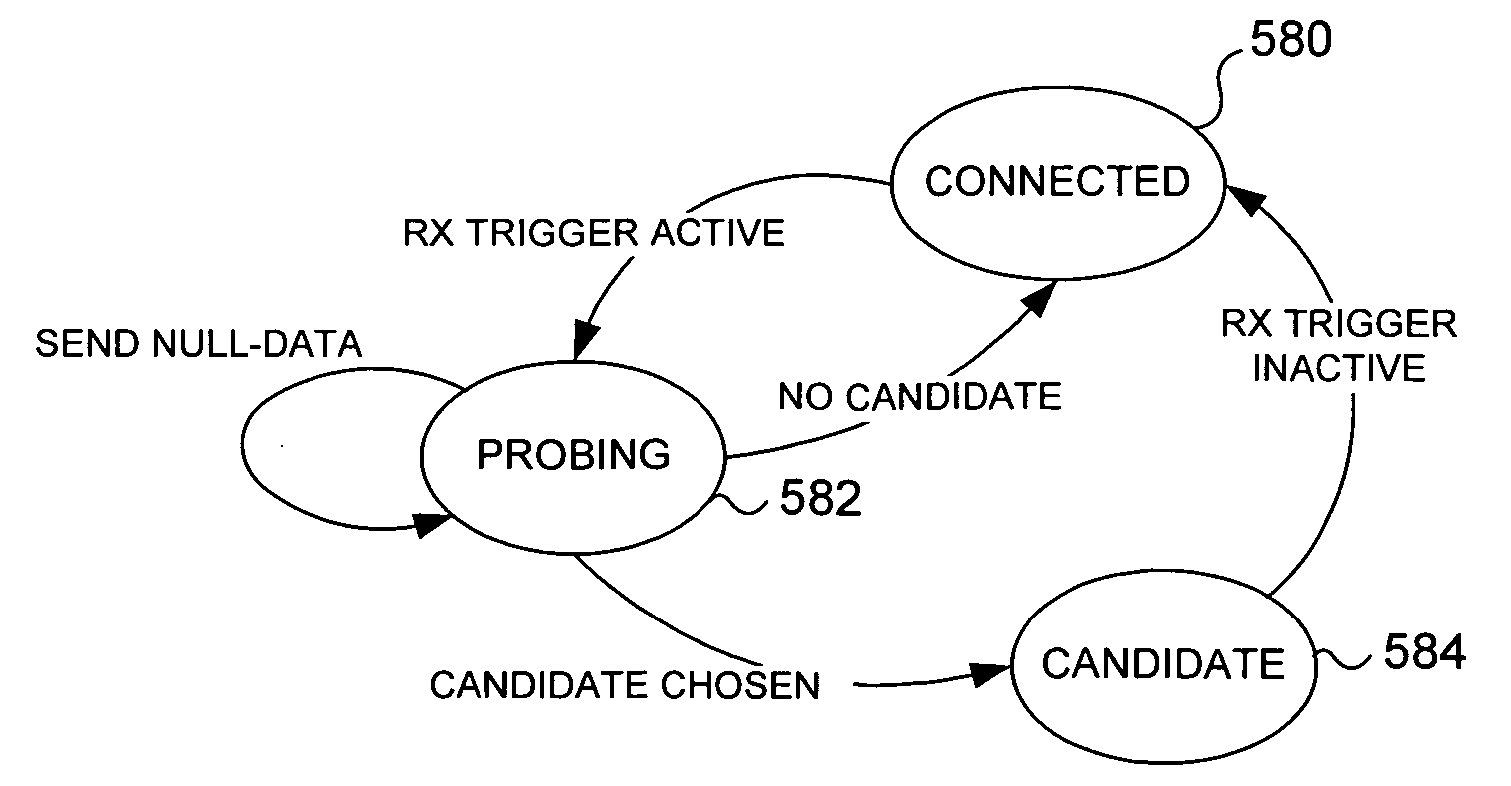Control of a multi-sectored antenna system to improve channel efficiency
a multi-sectored antenna and control technology, applied in the field of control of antennas, can solve problems such as problems such as the inability to achieve adequate rf coverage at a desired data throughput, the inability to control the range and data rate of such systems, and the inability to control the reception of client devices, so as to achieve a higher data rate and data rate
- Summary
- Abstract
- Description
- Claims
- Application Information
AI Technical Summary
Benefits of technology
Problems solved by technology
Method used
Image
Examples
Embodiment Construction
[0032]FIG. 1A (Prior Art) is a simplified functional block diagram of a typical wireless device like that usable with the present invention. This wireless device includes a processor 65 that is coupled to a PC or other computing device (not shown) so that data that has either been received or that is being provided for transmission to another wireless device can be communicated to the processor. Processor 65 is coupled to a memory 67, which stores machine instructions for processing the data and for carrying out other functions. A media access control (MAC) block 69 and physical (PHY) layer functional block 71 are disposed between processor 65 and an RF omnidirectional antenna 73. Although a second omnidirectional antenna is typically provided, only one is used at a time. This conventional wireless device does not include a directional antenna, and it is subject the problems noted above communicating over a wireless network. An example of one of these problems is illustrated in FIG....
PUM
 Login to View More
Login to View More Abstract
Description
Claims
Application Information
 Login to View More
Login to View More - R&D
- Intellectual Property
- Life Sciences
- Materials
- Tech Scout
- Unparalleled Data Quality
- Higher Quality Content
- 60% Fewer Hallucinations
Browse by: Latest US Patents, China's latest patents, Technical Efficacy Thesaurus, Application Domain, Technology Topic, Popular Technical Reports.
© 2025 PatSnap. All rights reserved.Legal|Privacy policy|Modern Slavery Act Transparency Statement|Sitemap|About US| Contact US: help@patsnap.com



